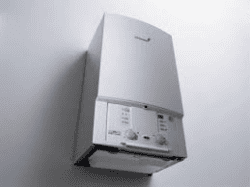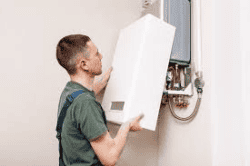A gas boiler is a critical component of your home’s central heating system. It is responsible for distributing heat throughout your house, as well as reheating any hot water that returns to it from the radiators. As such, it’s essential to install your gas boiler correctly to ensure optimal performance. Luckily, the process of installing a new boiler isn’t overly complex.
Many homeowners are replacing their old and inefficient heating systems with modern, energy-efficient boilers. This is because they know that they can save money on energy bills, make their homes more comfortable and help reduce CO2 emissions.

When making a decision on the right boiler, consider the specific needs of your household. Gas boilers use natural gas to heat water and air for circulation throughout your home, whereas oil boilers use a burner to warm the air and distribute it to the rooms of your property.
An important consideration is the price of each type of boiler, and this includes any additional costs such as installation or repairs. For example, a new gas boiler could incur higher upfront installation costs than an electric model due to the need for a gas supply line. However, you will likely find that long-term savings on energy costs can make the investment worthwhile.
Once you’ve decided on the type of boiler that is right for your home, it’s time to start planning the installation. First, you’ll want to determine where the boiler will be located. This will depend on the size of your home and your existing heating system, but you’ll want to select a location that offers easy access to your main water pipe and your gas supply. For advice on Boiler installation Cheltenham, contact a site like https://www.blu-fish.co.uk/gas-heating-services-cheltenham/boiler-installation-cheltenham/

The next step is to add the appropriate pipes to your boiler system. This is referred to as ‘dressing’ the boiler, and it’s an important step that should be done correctly to avoid any problems in the future. To do this, you’ll need to attach the circulator pump to your boiler, then add the riser nipples. The number of riser nipples you’ll need to install will depend on the number of different heating zones in your home, so be sure to plan accordingly. Finally, you’ll need to attach the proper pipes to each zone of your home, using a wrench to complete this task.
